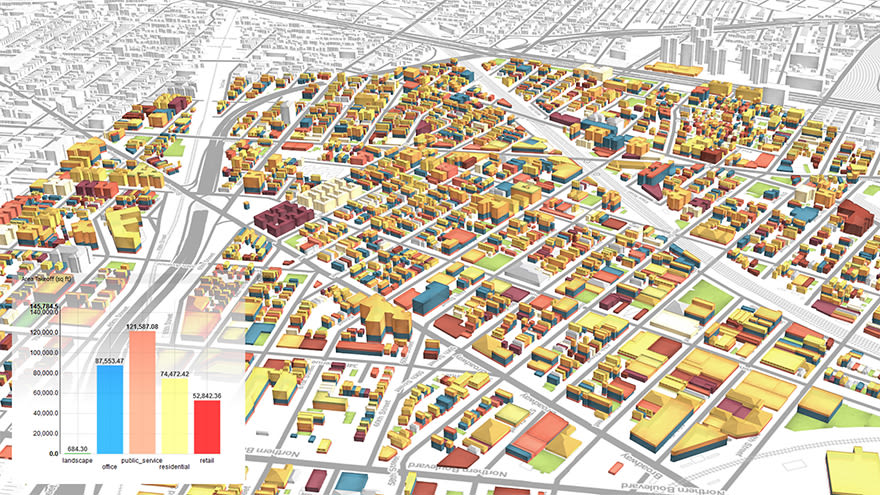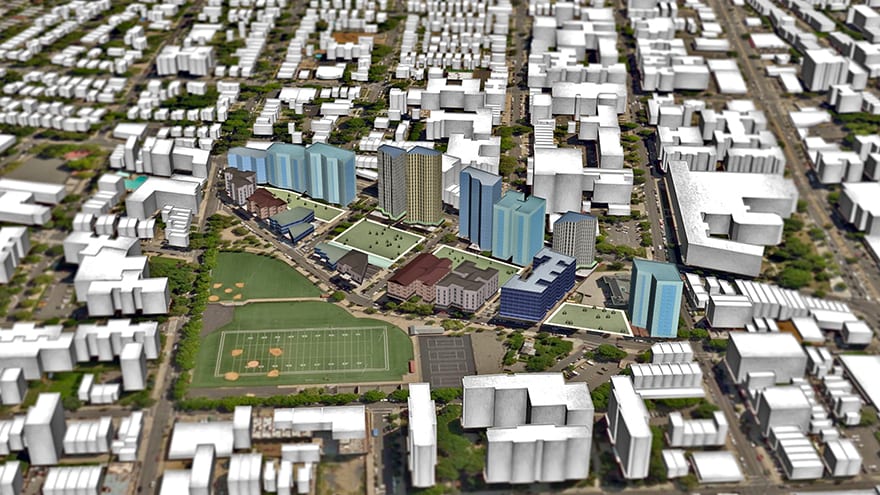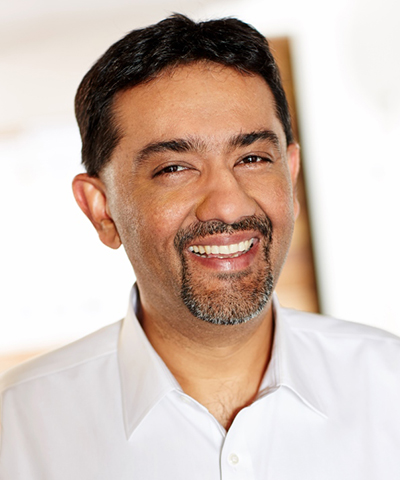Autodesk senior vice president Amar Hanspal says that the company is “just scratching the surface of smart building technology” but is gearing up to meet the needs of contractors that want to offer smart solutions – and city authorities and utilities companies that need better decision-making.
Hanspal was speaking to BIM+ ahead of a preview of its “Urban Canvas” software for planning departments and city authorities (see below), a tool which pulls together information databases and design tools on individual sites and at a city-wide scale.
“When planning neighbourhoods or sites, for example an urban extension, it can aggregate all the information on land use, city codes, or population data, in an entire environment. It answers the question – what happens if you build here? What will the impact be?”
But the company is looking ahead to more applications of the “Internet of Things”, he said: “We’ve made investments in Lucid Technologies and Panoramic Power, which collects data from the building’s sensor systems, and starts to provide insight and analysis, and we’re starting to take that data and merge it with BIM models to see what insights our customers can get.”
Hanspal acknowledged that a fully-instrumented, sensor-filled building might generate more data than owners can comfortably handle. “Schiphol airport in Amsterdam has a sensor on every square foot of space – they have more sensors than they know what to do with the data!

The tool pulls together information databases and design tools on individual sites and at a city-wide scale
“So we’re working with NASA in the US, a cooperative project to figure out what to do with the data that smart buildings generate. You can do the obvious things like switching off lights and get more predictive about heating loads, but more than that can be done. For instance, you can start to personalise the experience, where the building recognises that you’re close to work [by communicating with your smartphones], so it turns on the vents five minutes before you show up, or books a desk for you.”
Urban Canvas is based on technology developed by a California-based company called Synthicity, acquired by Autodesk in early 2015. It allows planners to design, analyse and collaborate with stakeholders of regional and urban planning projects, collating and sharing data to more rapidly design and communicate alternative scenarios for proposed projects in a dynamic graphical environment.
It consolidates other existing tools such as GIS software, databases, spreadsheets, and design and analysis software tools to help integrate these tasks in a single platform.
Using desktop software and cloud-based data resources, Autodesk Urban Canvas enables planning professionals to collaboratively edit and share built environment data in the cloud; develop and evaluate alternative scenarios and development phasing; track development projects; more rapidly generate 3D building models for proposed projects, along with local context; and visualise and analyse alternative planning scenarios.
Autodesk Urban Canvas is now available in the UK as an annual or quarterly desktop subscription. More information is available on this video.

Autodesk Urban Canvas enables planning professionals to collaboratively edit and share built environment data in the cloud

We’re working with NASA in the US, a cooperative project to figure out what to do with the data that smart buildings generate. You can do the obvious things like switching off lights and get more predictive about heating loads, but more than that can be done.– Amar Hanspal, senior vice president, Autodesk
Comments
Comments are closed.












Does this replace Infrastructure Modeller or is this yet just another tool by AD?